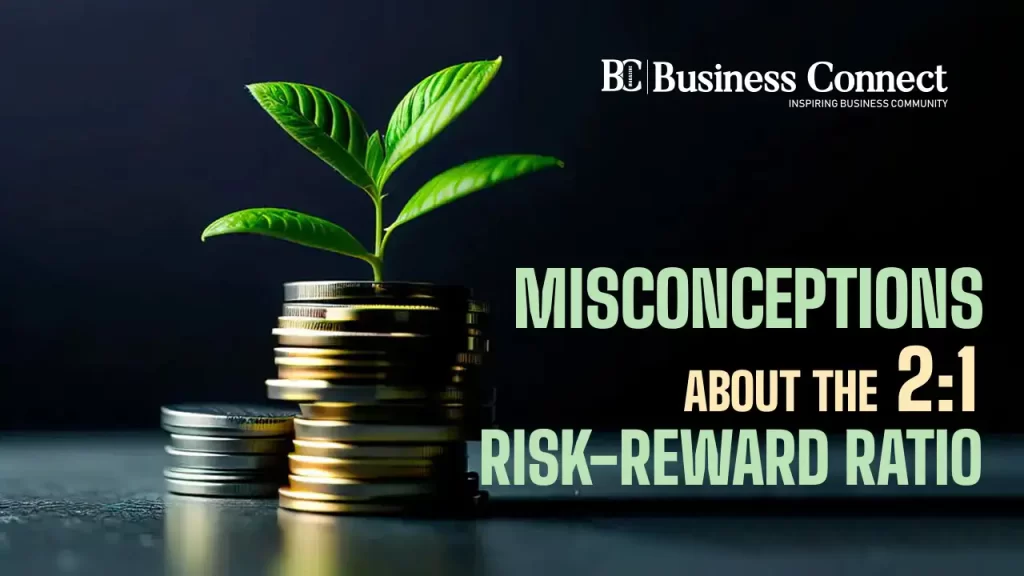Misconceptions about the 2:1 Risk-Reward Ratio
The 2:1 risk-reward ratio is a common strategy in trading, promising double the reward for every dollar risked. However, many traders stumble over misunderstandings and misconceptions about its application.
Let’s dive into the common pitfalls and clear up the confusion surrounding this widely used trading rule. Visit instant-max.io if you are looking for a website that connects you to investment education firms that can help you along your investment journey.
Misunderstanding the Fundamentals of Risk and Reward
Risk and reward are two sides of the same coin in investing, but many people mix them up. Risk is about the chance you might lose money. The reward is the potential gain from an investment.
It’s crucial to know this difference to make smart choices. The 2:1 risk-reward ratio is a simple rule: for every dollar you risk, you aim to make two dollars. It sounds easy, but many don’t get it right.
For example, some traders think the ratio guarantees success. They believe if they stick to it, they’ll always make money. But that’s not true. The market is unpredictable. Sometimes, even a good strategy fails. It’s also a mistake to ignore the quality of the trade setup. A 2:1 ratio on a poor setup is still a bad deal. So, understanding these basics is key.
Overlooking Market Conditions and Volatility
Market conditions change all the time. Volatility, or how much prices move, is a big part of this. When the market is calm, the 2:1 ratio might work well. But in a volatile market, things are different. Prices can swing wildly, making it harder to stick to your plan.
Many traders overlook this and get caught off guard. They don’t adjust their strategies to match the current market. For instance, during a volatile period, a stop-loss order might trigger too soon, cutting short a potentially profitable trade.
It’s like sailing without checking the weather—risky and unpredictable. Being aware of market conditions helps in making better decisions and avoiding unnecessary losses.
Ignoring Individual Trader’s Risk Tolerance
Not all traders are the same. Each person has a different level of risk they can handle. This is called risk tolerance. Some are comfortable with high risk, hoping for big rewards. Others prefer safety and smaller gains. Ignoring this personal aspect can lead to big mistakes.
Using a 2:1 ratio blindly can be a problem. If a trader can’t handle the stress of potential losses, they might make poor decisions. For example, a cautious trader might panic and sell early, missing out on gains. On the other hand, a risk-taker might hold on too long and lose more than they can afford. It’s important to tailor strategies to fit personal comfort levels.
Misapplication in Different Asset Classes
The 2:1 risk-reward ratio isn’t a one-size-fits-all rule. Different asset classes have unique characteristics. Stocks, forex, commodities, and cryptocurrencies each behave differently. Applying the same ratio to all can lead to trouble.
For example, forex markets are highly liquid and often more volatile than stocks. A strategy that works for stocks might not suit forex trading. Similarly, commodities can be influenced by global events, affecting their prices suddenly. Understanding the specific nature of each asset class is crucial. It’s like using the right tool for the job—essential for success.
Misinterpreting Statistical Probabilities
Many traders misunderstand probabilities in trading. They might think a 2:1 ratio means they will win two times out of three. But that’s not how it works. The ratio only shows the potential reward relative to the risk, not the likelihood of winning.
For example, even with a good setup, the chance of success can vary. It’s possible to have a series of losses despite having a favorable ratio. This misunderstanding can lead to frustration and poor decision-making. It’s important to grasp that trading involves both wins and losses. Understanding probabilities helps in setting realistic expectations and maintaining a balanced approach.
By knowing these common pitfalls, we can make better trading choices. It’s not just about following a ratio; it’s about understanding the principles behind it and adapting to the ever-changing market conditions. So, next time you trade, keep these points in mind and see the difference it makes in your success.
Conclusion
Understanding the 2:1 risk-reward ratio goes beyond simple arithmetic. By recognizing its limitations and tailoring it to individual needs and market conditions, traders can avoid common mistakes. Remember, success in trading requires more than just a ratio—it demands a well-rounded strategy and informed decisions.



